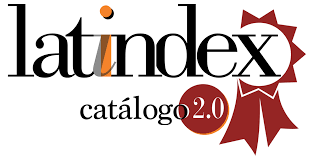Public relations in Civil Guard communication during COVID-19
DOI:
https://doi.org/10.5783/revrrpp.v12i24.770Keywords:
responsible communication , Civil Guard, public relations, COVID-19.Abstract
COVID-19 copied the information content in the media and highlighted the need for responsible communication from all spheres of society to guarantee citizen security and maintain the trust and credibility of the authorities as sources of information. In a context of information multiplatforms, official communication focused on the rotation of public appearances and an increase in fake news, the need to be informed increases the use and consumption of media by citizens, while at the same time rigorous official communication is demanded by the agents in authority. This study aims to describe the relationship of the Guardia Civil with different audiences, as an active agent and formal prescriber during the pandemic based on three objectives: 1. To know the presence of the Civil Guard in the conventional and digital media during the pandemic; 2. To describe the treatment and approach of news about the Guardia Civil in the press during the pandemic; and 3. From the information about its stakeholders in the social responsibility reports, infer the relational role of the Guardia Civil with its audiences in the press news.
To achieve the objectives, a mixed methodology with content analysis is used. First, a quantitative and qualitative analysis of the strategic communication (media used and stakeholders) described in the Social Responsibility Reports of 2019 and 2020, and in the Sustainability Plan (2021-2025) of the Civil Guard is carried out. Second, based on the search for the keywords "Guardia Civil" and "COVID" in the two generalist newspapers with the largest coverage in Spain (El País and El Mundo), and throughout the six waves (from March 14, 2020 to December 31, 2021), a content analysis of the 198 resulting news items is performed (FACTIVA database). The analysis variables are: year, newspaper, focus, role of the CG in the communication, media treatment, formal agents and publics in the news and level of responsibility in their communicative behavior. The data indicate a segmentation of audiences in the Social Responsibility and Sustainability Plan reports that show a communication strategy based on a motivational relational behavior of the Civil Guard with its stakeholders, as opposed to a prescriptive presence of other official bodies or protagonist with a predominantly informative approach of the news in the media towards the general population. The only exception refers to the group of young people who appear associated with news about the intervention of the Guardia Civil for non-compliance with restrictions. Although the presence of the Guardia Civil in the media decreases in 2020, its strategy maintains -coinciding with several studies- the use of media that generate more trust in the population (traditional and digital) and, in addition, it registers an increase in followers on Twitter and TikTok. The news with informative approaches refer to restrictions, while the motivational ones focus on communicating measures to safeguard health. It is concluded that although its communicative strategy segments audiences, even in its profiles in social networks such as TikTok, it is still not a visible strategy in news about the Civil Guard in the media.
Downloads
References
AZNAR-GÓMEZ, H. (2011). Comunicación responsable deontología y autorregulación de los medios. Barcelona: Ariel.
BARÓMETRO SOBRE LA PERCEPCIÓN SOCIAL DE LA TELEVISIÓN EN ABIERTO (2021). 2ª Oleada. Noviembre 2021. Barlovento Comunicación y Deloitte. https://www2.deloitte.com/es/es/pages/technology-media-and-telecommunications/articles/barometro-percepcion-social-television-en-abierto.html
BOIRY, P. (1998). Relaciones Públicas o la estrategia de la confianza. España: Gestión 2000.
CARRETÓN-BALLESTER, C. y LORENZO-SOLÁ, F. (2018). Niveles de responsabilidad de los medios en sus relaciones con las minorías. Epilepsia y autismo. Revista Internacional de Relaciones Públicas 8(15), 215-236. https://doi.org/10.5783/revrrpp.v8i15.521
CARRETÓN-BALLESTER, C. y VIÑARÁS-ABAD, M. (2020). Las relaciones públicas estratégicas para generar confianza y reputación. Revista Doxa de Comunicación, 30, 179-185. https://doi.org/10.31921/doxacom.n30a9
CARRETÓN-BALLESTER, C. y VIZCAÍNO-ALCANTUD, P. (2021). Análisis de las campañas de sensibilización del Gobierno de España durante la COVID-19. En Segarra-Saavedra, J., Herrero-Gutiérrez, J. y Hidalgo-Marí, T. (ed.). De la universidad a la sociedad. Transferencia del conocimiento en el área de Comunicación (64-82). España: Dykinson.
CASERO-RIPOLLÉS, A. (2020). Impact of Covid-19 on the media system. Communicative and democratic consequences of news consumption during the outbreak. El profesional de la información 29(2). https://doi.org/10.3145/epi.2020.mar.23
CASSANY, R. (2020). TikTok, el nuevo instrumento de la comunidad médica contra las informaciones falsas sobre la COVID-19. Barcelona: UOC.
CASTILLO-ESPARCIA, A. (2009). Teoría e historia de las relaciones públicas. Barcelona: UOC.
CASTILLO-ESPARCIA, A.; FERNÁNDEZ-SOUTO, A.B.; y PUENTES-RIVERA, I. (2020). Comunicación política y Covid-19. Estrategias del Gobierno de España. Profesional de la Información 29(4). https://doi.org/10.3145/epi.2020.jul.19
CASTILLO-ESPARCIA, A.; MORENO, A. & CAPRIOTTI-PERI, P. (2020). Relaciones públicas y comunicación institucional ante la crisis del COVID-19. Revista Internacional de Relaciones Públicas 10(19), 01-06. http://dx.doi.org/10.5783/RIRP-19-2020-01-01-06
CORRAL-HERNÁNDEZ, D. (2020). La huella del coronavirus en los medios de comunicación. Boletín IEEE (18), 1242-1254.
COSTA-SÁNCHEZ, C. & LÓPEZ-GARCÍA, X. (2020). Comunicación y crisis del coronavirus en España. Primeras lecciones. Profesional de la Información 29(3). https://doi.org/10.3145/epi.2020.may.04
CRESPO, I. & GARRIDO, A. (2020). La pandemia del coronavirus: estrategias de comunicación de crisis. Más Poder Local, 41, 12-19.
DE ANDRÉS, S. & GONZÁLEZ, R. (2012). La comunicación en el marco de la Responsabilidad Social. Bases para una definición de Comunicación Responsable. Revista Internacional de Investigación en Comunicación aDResearch ESIC 6(6), 14-31. https://doi.org/10.7263/ADR.RSC.006.01
FLORES, L. & VELASCO, JM. (2009). Una comunicación responsable es sinónimo de gestión responsable. Revista Corresponsables, 17, 60-61.
GALLEGO-TRIJUEQUE, S. (2016). Redes sociales digitales: información, comunicación y sociedad en el S.XXI (2000-2010). Tesis doctoral. Universidad Complutense de Madrid. https://eprints.ucm.es/id/eprint/44233/1/T39077.pdf
GUARDIA CIVIL (s.f.). Información institucional. Recuperado de https://www.guardiacivil.es/es/institucional/Conocenos/index.html
GUARDIA CIVIL (2020). Libro de Documentación Complementaria de la Memoria de Responsabilidad Social de la Guardia Civil 2020. Recuperado de https://www.guardiacivil.es/documentos/pdfs/2021/rsc/Libro_de_Documentacion_Complementaria_RSC_2020.pdf
HERNÁNDEZ-CRUZ, A.N. (2020). El Rol de los Medios de Comunicación en la Pandemia del COVID-19 a Nivel Mundial. En Vázquez-Atochero, A. y Cambero-Rivero, S. (eds.) Reflexiones desconfinadas para la era posCOVID-19, 161-178. Badajoz, España: AnthropiQa 2.0.
JÓDAR-MARÍN, J.A. (2010). La era digital: nuevos medios, nuevos usuarios y nuevos profesionales. Revista Razón y Palabra, 71.
KOURY, J.M. & HIRSCHHAUT, M. (2020). Reseña histórica del COVID-19: ¿Cómo y por qué llegamos a esta pandemia? Acta odontológica venezolana 58, 3-4.
LÓPEZ-GOLÁN, M.; CAMPOS-FREIRE, F.; LÓPEZ-LÓPEZ, P.C. & RIVAS-ECHEVERRÍA, F. (2018). La comunicación en la nueva sociedad digital. Venezuela: Consejo de publicaciones.
LOSADA-DÍAZ, J. C., RODRÍGUEZ-FERNÁNDEZ, L. & PANIAGUA-ROJANO, F. J. (2020). Comunicación gubernamental y emociones en la crisis del Covid-19 en España. Revista Latina de Comunicación Social, 78, 23-40. https://www.doi.org/10.4185/RLCS-2020-1467
MARTÍNEZ-GARZA, F.J. & GONZÁLEZ-TREVIÑO, M.E. (2021). Medios de comunicación y medios sociales en tiempos de COVID-19. Comunicación, 45, 13-29.
MASIP, P.; ARAN-RAMSPOTT, S.; RUIZ-CABALLERO, C.; SUAU, J.; ALMENAR, E. & PUERTAS-GRAELL, D. (2020). Consumo informativo y cobertura mediática durante el confinamiento por el Covid-19: sobreinformación, sesgo ideológico y sensacionalismo. El profesional de la información 29(3). https://doi.org/10.3145/epi.2020.may.12
MONTAÑA-BLASCO, M., OLLÉ-CASTELLÀ, C. & LAVILLA-RASO, M. (2020). Impacto de la pandemia de Covid-19 en el consumo de medios en España. Revista Latina de Comunicación Social, 78, 155-167. https://www.doi.org/10.4185/RLCS-2020-1472
MORENO, Á.; FUENTES-LARA, C. & NAVARRO, C. (2020). Covid-19 communication management in Spain: Exploring the effect of information-seeking behavior and message reception in public’s evaluation. El profesional de la información 29(4). https://doi.org/10.3145/epi.2020.jul.02
MORENO-ESPINOSA, P., CONTRERAS-OROZCO, J.H. & ROMÁN-SAN-MIGUEL, A. (2021). Medios de comunicación, redes sociales y virus del miedo, durante la pandemia de COVID-19. Ámbitos: Revista internacional de comunicación 53, 148-160. https://doi.org/10.12795/Ambitos.2021.i53.08
MURCIANO-MARTÍNEZ, M. (2006). Cambio tecnológico y sistema de medios. La transición digital en los medios de comunicación. Comunicación y pluralismo, 0, 69-85.
ORÚS, A. (2022, diciembre 16). Periódicos con mayor número de lectores diarios en España en 202,. Statista de https://es.statista.com/estadisticas/476795/periodicos-diarios-mas-leidos-en-espana/
PARRA-VALCARCE, D., EDO-BOLÓS, C. & MARCOS-RECIO, J.C. (2017). Análisis de la aplicación de las tecnologías de realidad aumentada en los procesos productivos de los medios de comunicación españoles. Revista Latina de Comunicación Social 72, 1.670-1.688. https://doi.org/10.4185/RLCS-2017-1240
PICAZO-SÁNCHEZ, L., DE FRUTOS-TORRES, B. & GUTIÉRREZ-MARTÍN, A. (2020). La COVID-19 en la prensa española. Encuadres de alarma y tranquilidad en las portadas de El País, El Mundo y La Vanguardia. Revista de Comunicación y Salud 10(2), 355-384. https://doi.org/10.35669/rcys.2020.10(2).355-384
ROMAN, G., ÁLVAREZ-REMENTERÍA, M., PÉREZ-IZAGUIRRE, E. & DOSIL, M. (2020). El rol de los Medios de Comunicación en Situaciones de Crisis Sanitaria. La Percepción de la Población en torno al Control y las Normas Sociales durante la Pandemia del COVID-19. Revista Latina de Comunicación Social 78, 437-456. https://www.doi.org/10.4185/RLCS-2020-1484
SCOLARI, C.A. (2012). Comunicación digital. Recuerdos del futuro. El profesional de la información 21(4), 337-340. http://dx.doi.org/10.3145/epi.2012.jul.01
SECRETARÍA GENERAL TÉCNICA DEL MINISTERIO DEL INTERIOR (2019). Memoria de RSCGC. Responsabilidad Social Corporativa 2019. Recuperado de https://www.guardiacivil.es/documentos/pdfs/2020/rsc/Memoria-RSC-2019.pdf
SECRETARÍA GENERAL TÉCNICA DEL MINISTERIO DEL INTERIOR (2020). Memoria de RSCGC. Responsabilidad Social Corporativa 2020. Recuperado de https://www.guardiacivil.es/documentos/pdfs/2021/rsc/20210623_Memoria_RSC_2020_Texto_v2.pdf
SECRETARÍA GENERAL TÉCNICA DEL MINISTERIO DEL INTERIOR (2021). Plan de sostenibilidad 2021-2025 de la Guardia Civil 2021. Recuperado de https://www.guardiacivil.es/documentos/pdfs/2022/Plan_Sostenibilidad_Guardia_Civil_2021_2025.pdf
SIMON, J.P. (2016). Nuevos agentes en la industria de los medios y contenidos. Telos. Revista de Pensamiento, Sociedad y Tecnología, 103.
RIVERA-ROGEL, D. & ROMERO-RODRÍGUEZ, L.M. (2019). La comunicación en el escenario digital. Actualidad, retos y prospectivas. Perú: Pearson Educación.
TÓRTOLA, A.V. (2017). La televisión en la era de las nuevas tecnologías. Tesis doctoral. Universidad de Buenos Aires. http://repositorio.filo.uba.ar/bitstream/handle/filodigital/4296/uba_ffyl_t_2017_se_tortola.pdf?sequence=1&isAllowed=y
VIVAR-ZURITA, H. & VINADER-SEGURA, R. (2011). El impulso de la industria de los contenidos digitales. CIC Cuadernos de Información y Comunicación 16, 115-124. http://dx.doi.org/10.5209/rev_CIYC.2011.v16.6
Downloads
Published
How to Cite
Issue
Section
License
Copyright (c) 2022 Revista Internacional de Relaciones Públicas

This work is licensed under a Creative Commons Attribution-NonCommercial-NoDerivatives 4.0 International License.
Authors publishing in this journal agree to the following terms:
a. Authors retain copyright and grant the journal the right to be the first publication of the work as licensed under a Creative Commons Attribution License that allows others to share the work with an acknowledgement of authorship of the work and initial publication in this journal.
b. Authors may separately enter into additional arrangements for non-exclusive distribution of the version of the work published in the journal (e.g., placing it in an institutional repository or publishing it in a book), with an acknowledgement of initial publication in this journal.
c. Authors are allowed and encouraged to disseminate their work electronically (e.g. in institutional repositories or on their own website) before and during the submission process, as it can lead to productive exchanges, as well as earlier and higher citation of published work (see The Effect of Open Access).





